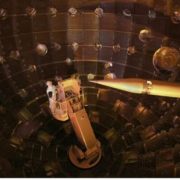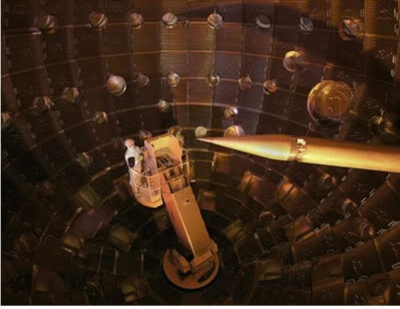Lockheed Martin?s Secret Fusion Breakthrough
Expect to hear a lot about ignition in the next year.
No, I don?t mean the rebuilt ignition you bought on eBay for the beat up ?68 Cadillac El Dorado up on blocks in your front yard.
Defense contractor Lockheed Martin?s (LMT) famed Skunk Works in California has finally come out of the closet and announced that it has made a major breakthrough in fusion research.
A small functioning reactor could be available in as little as three years.
If true, the news would be dynamite.
I have long been partial to Lockheed as a company, as it employed my mother on an assembly line in Los Angeles to build B-17 bombers during WWII.
When I visited a secret Russian airbase in 1992 to view the wreckage of Gary Powers? U-2 spy plane, the steel Lockheed serial number was unmistakable.
After I asked to take it home as a souvenir, my hosts replied with a very firm ?Nyet!? and hurried me out of the facility, citing it as a ?National Treasure.?
The new fusion technology would deliver ten times more power than conventional nuclear reactors at a fraction of the cost.
Fusion involves the combining of two hydrogen atoms to create one helium atom, releasing immense amounts of power.
To know how much, simply refer to Albert Einstein?s famous equation, E = MC squared.
If successful, the discovery could make available unlimited amounts of carbon free energy at near zero cost, without creating any toxic waste.
The breakthrough relies on using a ?magnetic bottle? to contain the several hundred million degree of heat generated, instead of four foot thick reinforced concrete containment structures.
So far, the stock market is clueless.
Economical fusion power, the type unleashed by thermonuclear hydrogen bombs, has long been the dream of physicists and long term planners everywhere.
The focus of research has until now taken place at the National Ignition Facility next door to me at Lawrence Livermore National Labs in Livermore, California. There, progress has recently suffered several set backs and time delays.
Mention California to most people, and images of love beads, tie died T-shirts, and Birkenstocks come to mind.
But it is also the home of the first atomic bomb, which was originally designed amid the vineyards and cow pastures of this bucolic suburb.
Dr. Robert Oppenheimer of the UC Berkeley School of Mining used to keep the first ever piece of purified plutonium in a file cabinet in his office that, thankfully, was made out of steel.
If it were a wooden cabinet, the US might have lost WWII.
Today, the world?s first cyclotron has been turned into a modern steel sculpture in a traffic roundabout, not a mile from my home.
The thinking at the time was that if someone accidently flipped the wrong switch, it wouldn?t blow up San Francisco, or more importantly, Berkeley.
The $5 billion Livermore project aims 192 lasers at a BB sized piece of frozen hydrogen, using fusion to convert it to helium and unlimited amounts of clean energy.
The heat released by this process reaches 100 million degrees, hotter than the core of the sun, and will be used to fuel conventional steam electric power plants.
The raw material is seawater, and a byproduct is liquid hydrogen, which can be used to fuel cars, trucks, and aircraft. If this all sounds like it is out of Star Trek, you?d be right.
I worked with these guys in the early seventies, back when math was used to make things, and before it was used to game financial markets.? I can tell you, there is not a smarter and more dedicated bunch of people on the planet.
If it works, we will get unlimited amounts of clean energy for low cost in about 20 years. Oil will only be used to make plastics and fertilizer, taking the price down to $10 for domestic production only.
The crude left in the Middle East will become worthless. Lumps of coal will only be found in museums, or in jewelry, its original use. If it doesn?t work, it will melt the adjacent Mt. Diablo and take me with it.
If Lockheed?s fusion success is scalable, it could lift its stock out of the pre-election doldrums from which it, and the rest of the defense sector has been suffering.
Those would include Northrop Grumman (NOC) and Boeing Aircraft (BA).
If you don?t get your newsletter tomorrow, you?ll know what happened.
Now what is this switch for?



